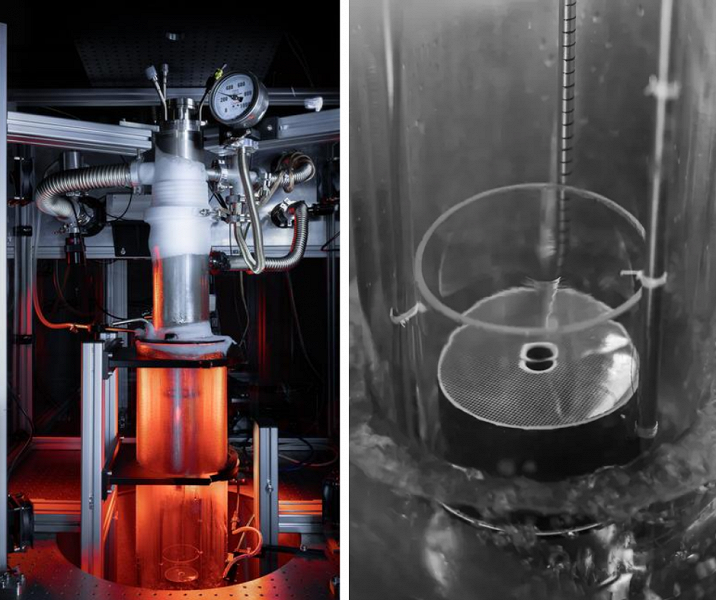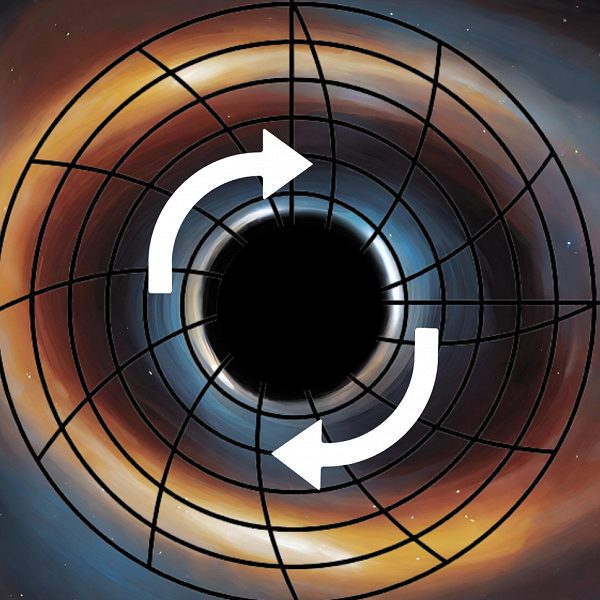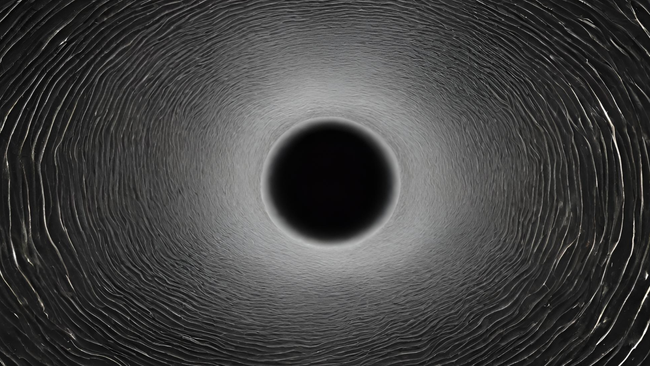Unique experiment reveals similarities between quantum tornadoes and black hole gravity
The regions around black holes are a harsh and turbulent environment that is governed by physics that is not available in other parts of the Universe. A research team led by scientists from the University of Nottingham was able to study these phenomena in laboratory conditions. They created a swirling quantum vortex in superfluid helium cooled to ultra-cold temperatures, essentially simulating a black hole on Earth.
«Quantum tornado» generated tiny waves on the surface of a superfluid liquid, which has a special property — absence of friction and other exotic characteristics observed at almost absolute zero. As a result of wave interaction with a quantum vortex, conditions were created similar to those that occur near rotating black holes.
«Using superfluid helium allowed us to study surface waves in more detail and accurately than in previous experiments with water. Thanks to the very low viscosity of superfluid helium, we were able to carefully study their interaction with the quantum vortex and compare the results with our theoretical predictions, — said Patrick Svankara, head of the research group from the University of Nottingham.
To understand why this experiment helps to better understand the nature of black holes, we can go back to the general theory of relativity, which Albert Einstein introduced in 1915. According to this theory, space and time are one, and gravity occurs when massive objects bend space-time.
Black holes are regions of space-time created by extremely dense and compact mass — a singularity in which the usual laws of physics are violated. The outer boundary of these regions, called the event horizon, is the section beyond which even photons are not fast enough to leave the event horizon.
Black holes are characterized by three known parameters: electric charge, mass and angular momentum (spin). A spinning black hole, known as a Kerr black hole, has angular momentum and drags spacetime along with it in the direction of its rotation. This is an effect known as the Lense-Thirring effect. named after the scientists who first proposed it.

Taking into account how the Lenz-Thirring effect and the behavior of matter around a Kerr black hole affect the surrounding region, scientists have suggested that a vortex in a liquid or a tornado in the atmosphere is a rough analogue of such regions of space-time. However, what is completely new is that this vortex, simulating a black hole, has not previously been observed in previous experiments conducted with ordinary liquid. It was realized in a superfluid medium, cooled to almost absolute zero.
To conduct the experiment, the research team developed a special cryogenic system for several liters of helium, cooled to a temperature below -271 degrees Celsius. This is 3-4 degrees above absolute zero, which is -273.15 degrees Celsius. Absolute zero is the theoretically lowest possible temperature at which atomic motion ceases.
At the temperatures reached in the experiment, liquid helium acquires quantum properties that do not allow the formation of large vortices. A team of researchers has created a «quantum tornado» in an ultracold superfluid using many small components.

«Superfluid helium contains quantum vortices, which usually tend to diverge. We were able to collect tens of thousands of these quantum vortices into a compact object that resembled a small tornado, which created a vortex flow with record strength in the context of quantum liquids», — explained Svankara.
Researchers have discovered parallels between «quantum tornado» and how the gravity of black holes affects space-time. The team hopes their experiment could open the way to deeper simulations of quantum physics in curved spacetime, including modeling the exotic properties of spacetime around black holes.
«When we first observed clear signs of black hole physics in our first analogue experiment in 2017, it was a breakthrough moment for understanding some complex phenomena that can be difficult, if not impossible, to study. Now, with a more sophisticated experiment, we've taken this research to the next level, which could ultimately lead to predictions of the behavior of quantum fields in curved spacetime around astrophysical black holes», — said Silke Weinfurtner, head of the Black Hole Laboratory, where the experiment was developed and carried out.

